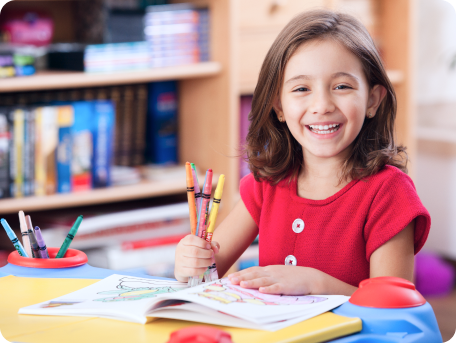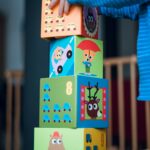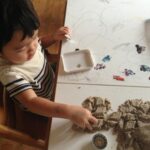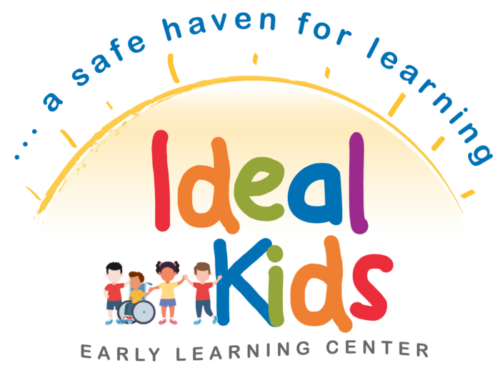


Montessori
The Montessori method of education is a child-centred approach to learning, developed by Dr. Maria Montessori (1870-1952), an Italian physician, in the early 20th century. This philosophy emphasizes independence, freedom within limits, and respect for a child’s natural psychological, physical, and social development.
Some key principles and elements of the Montessori method:
- Child-Centred Learning: Children are encouraged to learn at their own pace, as the curriculum is designed to meet the unique needs and interests of each child, allowing them to progress as they are ready, rather than according to a set schedule. The curriculum emphasizes self-directed learning. This autonomy fosters a deep engagement and love for learning.
- A Prepared Environment: Montessori classrooms are carefully prepared environments that offer structure while allowing freedom of choice. Materials are arranged on low, accessible shelves, enabling children to select what they wish to work on. Classrooms are designed to be aesthetically pleasing and orderly, with everything in its place. This encourages children to take responsibility for their surroundings and develop a sense of order.
- Montessori Materials: The Montessori curriculum comes with specially designed materials that encourage hands-on learning. These materials are often self-correcting, meaning children can see and correct their mistakes independently. As children work with these materials and gain mastery, they move from concrete experiences to abstract thinking. For example, counting beads may be used to understand numbers before transitioning to written numerals.
- The Whole Child: Montessori focuses on the holistic development of the child, including intellectual, emotional, social, and physical growth. Activities are designed to support all aspects of development, not just academic skills. More so, strong emphasis is placed on practical life skills, such as dressing, cleaning, and food preparation. These activities help children develop independence, concentration, and a sense of responsibility.
- The Educator: The educator in the Montessori classroom is seen and referred to as a Guide or Directress, whose role is simply to guide or direct the learning process. They carefully observe each child to understand their needs and provide appropriate support, stepping in when necessary but allowing the child to lead their learning.
- Faith in the Child: The Montessori method encourages faith in every child. The educator must believe in the child for positive development and normalization.
- Vertical Grouping: Montessori believed in mixed-age classrooms, usually spanning three years. This setup allows younger children to learn from older peers and older children to reinforce their knowledge by teaching concepts to younger classmates. This helps older children to develop their sense of responsibility towards younger learners. It also fosters a sense of community and collaboration, where children of different ages and abilities work together and learn from one another.
- Intrinsic Motivation: Montessori education nurtures a child’s natural curiosity and intrinsic motivation to learn. Rather than relying on external rewards or punishments, children are encouraged to explore and learn, and would usually find it personally satisfying.




“The greatest gifts we can give our children are the roots of responsibility and the wings of independence.”
Dr. Maria Montessori
